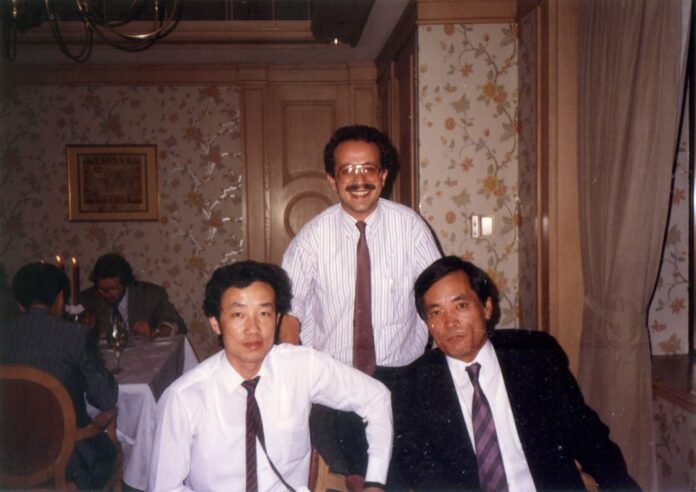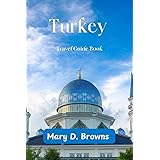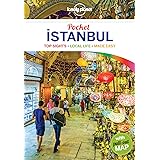1. The Chinese are the oldest neighbors of the Turks.
In the words of the famous French Sinologist Alain Peyrefitte, “Turks and Chinese seem to be in diametrically opposite positions at the two ends of the same giant continent. Yet there are many reasons why they should understand each other. Turkmen horsemen have roamed Asia for twenty centuries. They came from the same Central and South Asian steppes, and shaped history in the Huang Ho (Yellow River) valleys as they did in the Anatolian plateaus. For centuries, Turkmen caravans formed the only link between China and the Western lands. Even today, one of the largest and most populated areas in China where non-Chinese people live is Chinese Turkestan, where Anatolian Turks live by blood relatives.”
The source of the first and most important inventions in the world was China. The printing press, the first simple clocks, the compass, gunpowder, furnace, and many other important inventions were created in the Chinese Empire.
The printing press has been known to the Turks for centuries. In the fourteenth century, the Mongol rulers of Persia issued and issued paper money, clearly in imitation of Chinese patterns. In an earlier date, the Turkish tribes in the Chinese border lands used a type of woodblock printing common in the Far East. But all this has been forgotten for a long time… What civilization did the Turks belong to and in which civilization did their future lie? In a distant and half-forgotten time, the Central-Asian ancestors of the Turks came to a turning point in their history after hesitating between China and Islam and chose the Western alternative… When the Turkish people gave up on China and converted to Islam 1000 years ago, the marches towards the West began.
Although there have been many struggles between the Turks and their neighbors the Chinese, it cannot be denied that the Chinese established one of the most advanced civilizations in the world until the 8th century. For this reason, the Chinese also had constructive effects on the Turks. The Turks had coins minted in the Chinese style. They learned silk making, tile making and paper making from the Chinese and they valued art.
The knowledge and experience coming from Central Asia probably contributed to the fact that the Turks reached the highest level in tile making in Iznik, Anatolia. It is noteworthy that there were 330 tile workshops in Iznik in the 15th century. So much porcelain was imported from China throughout the 17th century that the elegant Iznik tiles that still dazzle us in museums today, could not stand this competition and were withdrawn from the market.
In another example, after the Ottomans made Bursa the capital city, sericulture reached the highest levels in this city, again the products of an old accumulation. Evliya Çelebi mentioned tea in his travelogue and thus cited perhaps one of the oldest documents regarding today’s consumption of this national drink in Anatolia. Tea would certainly come from China via Russia or via Southeast Asia and the Hejaz. With the spread of tea, a large amount of Chinese porcelain also entered the Ottoman Empire.
The prosperous cities of their closest neighbors, the Chinese, who were in the most advanced state in terms of civilization, various elegant goods, wonderful porcelain, deliberate weapons, tools and rich products, especially silk, which were insistently sought in the West, were affecting the Turks. They were right in that too. Aren’t gunpowder, paper, compass always invented in China? Even the printing press.
- Chinese Elements in Turkish:
Chinese elements in Turkish have not been studied yet. In this way, the only thing that has been done so far has been to deal with Chinese written Turkish words and sentences, names of persons and places, in short, Turkish transcribed with Chinese letters. The Chinese elements, which were transferred to Turkish, became the property of Turkish in any region, in any period, and became one of the building blocks of Turkish thought, have not been researched within the criteria of science. What we have on this subject is that various lexicographers ascribe some words to Chinese without any special effort, which they cannot explain in Turkish. For example, M. Rä sä nen cited 147 words in his dictionary as Chinese; However, it is not certain that all the words shown in this dictionary are Chinese, nor that the number 147 is certain.A work dealing with elements from the Chinese of the new eras into Turkish was published in Moscow in 1970. Of course, the determination of quotations between languages is incomparably easier when it comes to the new eras in which writing has become widespread. As a matter of fact, although it is the first study, 1873 Chinese words and forms have been determined in the language of today’s Uighur Turks. This work, as we said, was published in Moscow in 1970 by Rahimovic under the title “Chinese Elements in the Uyghur Language”.This work, as we said, was published in Moscow in 1970 by Rahimovic under the title “Chinese Elements in the Uyghur Language”.This work, as we said, was published in Moscow in 1970 by Rahimovic under the title “Chinese Elements in the Uyghur Language”.
- Turkish Elements in Chinese:
Unfortunately, even the word Turkish elements in Chinese is not an easy word to say. Many researchers have not considered that Turkish elements can be found in Chinese. Of course, there are some reasons for this. The most important of these reasons is that there is a thousand-year period between the oldest written Turkish document we have and the period when Chinese was first written.
- Chinese Elements in Turkish Culture :
While the effect of Arab and Iranian elements in Turkish culture is a well-known subject, a search for the determination of the effects of Central-Far Asian and Chinese elements in the mentioned synthesis should be kept alive on the agenda.
CULTURAL INTERACTION
FROM TURKS TO THE CHINESE FROM THE CHINESE TO THE TURKS
ART Gin Violin (Huqin) Çintamani (Dragon Motif)
Tile
Porcelain
Yin Yang
Hatayi (stylized flower)
LANGUAGE Tea, cloth, wood, silk, tangerine
FOOD Ravioli (Mantou) Tea
Huntun (Wanton) Apricot, Tangerine, Orange
Wine (Yakut Turks) Pasta
MATERIAL Leather Silk
Iron Paper





















